Estate Jewelry: Bird Heads, Bridal Crowns, and an Eyeball
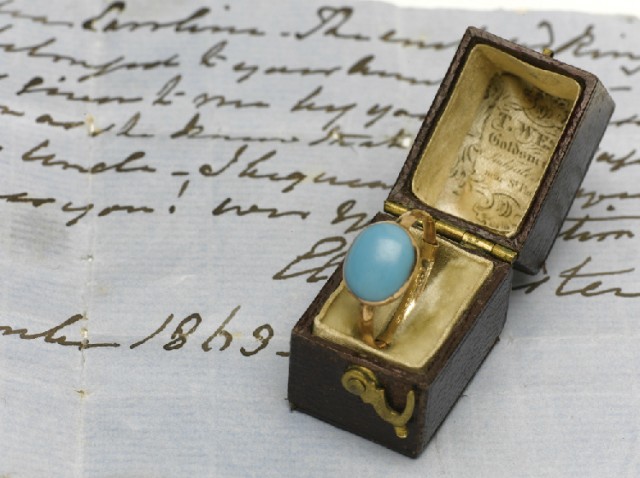
Some of you may want to sit down for this. This simple gold ring, set with a cabochon-cut blue stone that Sotheby’s believes to be odontalite (a 19th-century substitute for turquoise) comes with a note. Dated November 1869, it says: “My dear Caroline. The enclosed Ring once belonged to your Aunt Jane. It was given to me by your Aunt Cassandra as soon as she knew that I was engaged to your Uncle. I bequeath it to you. God bless you!” The note is signed by Eleanor Austen.
Yep, this ring belonged to Jane Austen. Simple and unostentatious (is that a word?), the ring is thought to be a good example of Jane’s taste (and budget); the auction catalogue cites a letter she wrote to her sister Cassandra, mentioning a locket that is “neat and plain.” After Jane’s death in 1817, the ring passed to Cassandra, who then gave it to her brother Thomas’s fiancée, Eleanor Jackson. Eleanor, as you read above, then left it to her niece Caroline Austen. Caroline never married, so the ring then passed on to her brother’s daughter Mary, and it continued to move through the family until today.
The ring will be auctioned at Sotheby’s London next Tuesday (July 10), in their English Literature, History, Children’s Books and Illustrations” sale. The estimated price is $31,000–47,000.
Note: This auction is KILLING ME. Not only is there the Austen ring, there’s also one of the two silver cigarette cases that Agatha Christie gave to the two musicians who recognized her at the Hydro Hotel in Harrogate, bringing an end to her mysterious 11-day disappearance in 1926. There’s also stacks of original manuscripts by Dorothy Sayers and Graham Greene, an Arthur Rackham ink and watercolor illustration of the Cheshire Cat, a ton of letters written by Benjamin Disraeli and Alan Sillitoe, a beautiful bound and illuminated copy of the Magna Carta, and, and, and, and … Push some more of my buttons, Sotheby’s. Damn.
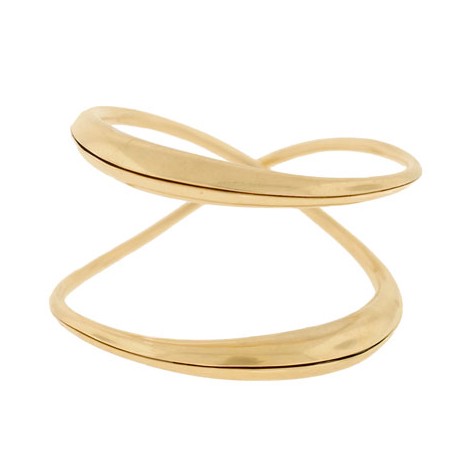
This piece is already sold, but I wanted to include it because it’s a great example of the work of contemporary goldsmith Michael Good. Good is renowned for developing a technique called “anticlastic raising,” in which a piece of metal is slowly and painstakingly manipulated so that it turns in upon itself, forming an open, hollow tube. It’s hard to describe — Good explained it to me himself once at a trade show, but I never really grasped it until I saw how it’s done in person. Someone has posted a bunch of videos from one of Good’s workshops on YouTube; check them out when you have a little time (some of them are long).
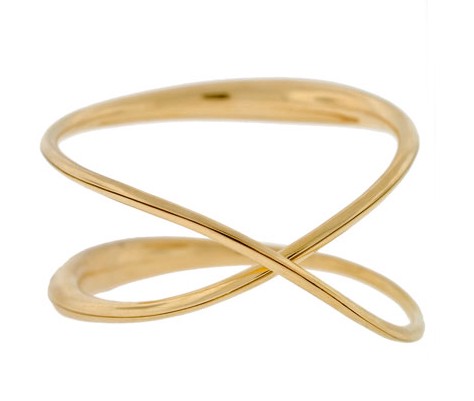
This particular bracelet is a double loop bangle in 18k yellow gold. A sliver of an open seam runs the length of the piece; watch the videos and marvel at how it’s done. Honestly, Good is a master of patience. I’m fairly certain that if I tried this, I’d immediately hit that thing too hard with the hammer and pierce the metal, and then hulk smash the entire workshop.
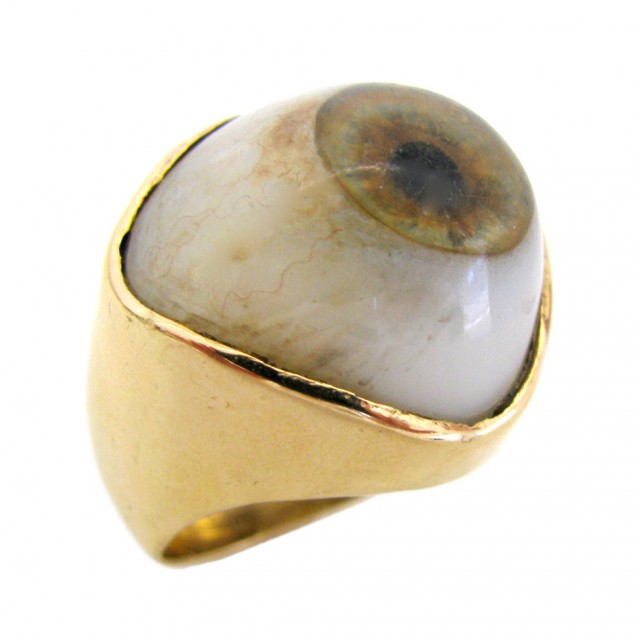
I love this. No, I think I love even more that someone actually MADE this. Circa 1970, this is a glass eye set in a 14k yellow gold band. It’s American, and, as the dealer states, “not for the faint of heart.”
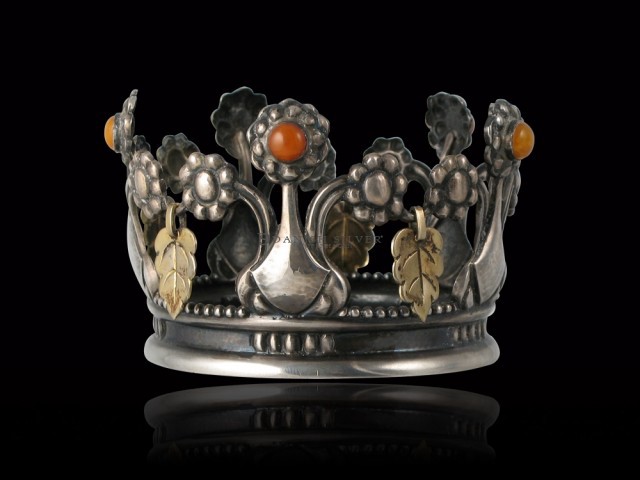
Bridal crowns are a Scandinavian tradition that reaches back to the Middle Ages; there’s one from Middelfart (heh), Denmark, in the National Museum of Denmark that dates to around 1525. Symbols of purity and virginity, they were often passed down from generation to generation. The bride wears the crown during the wedding ceremony, after which the groom removes it from her head, signifying their union.
This crown, however, was made by the great Danish silversmith Georg Jensen for his friend Frederik Ferdinand Tillisch, who gave it as a gift to his wife in 1911. It’s an extremely rare Jensen item, made in silver, with five amber stones and five gilded leaves that hang loose from the piece. The design is an example of the Danish skønvirke style — pairing the natural motifs of Art Nouveau with the Arts and Crafts standard of using affordable materials to create exceptional, handcrafted work.
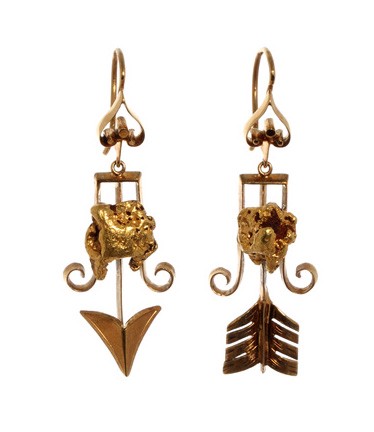
These are so neat! Circa 1860–1880, these 18k gold earrings pair actual gold nuggets from the California gold rush with a fantastic — and so modern-looking — split-arrow motif.
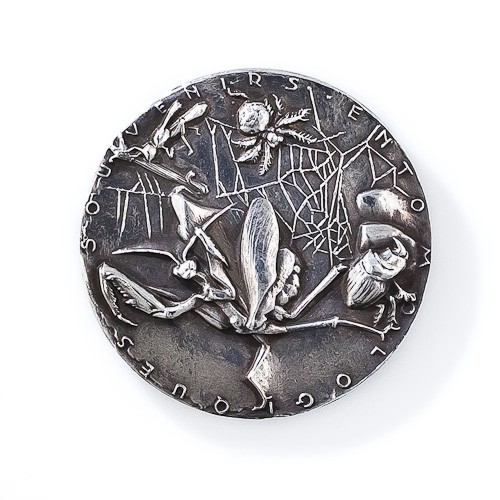
While there are other far more spectacular pieces available from this dealer (look at this dragonfly!), this little French Art Nouveau pin caught my attention. A wasp, a spider, and a beetle are all depicted as moving industriously around the top and sides of the piece, while at center bottom, a praying mantis gestures ferociously out at us. Around the edge are the words “souvenires entomologiques.”
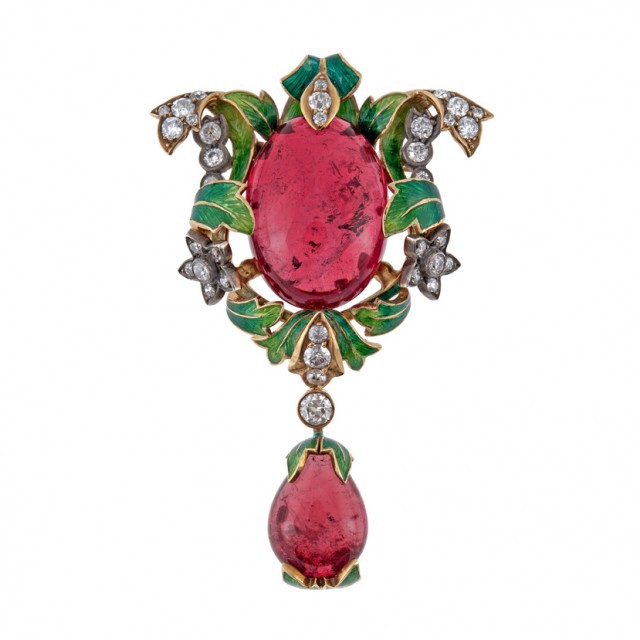
This silver and yellow-gold pin/pendant is a great example of why I love colored stones. LOOK AT THAT PINK. Two gorgeous cabochon-cut pink tourmalines are cradled by leaves that have been enameled in contrasting shades of green, and roughly 2 carats of old European-cut diamonds add a touch of fire to the design. The bottom drop detaches.
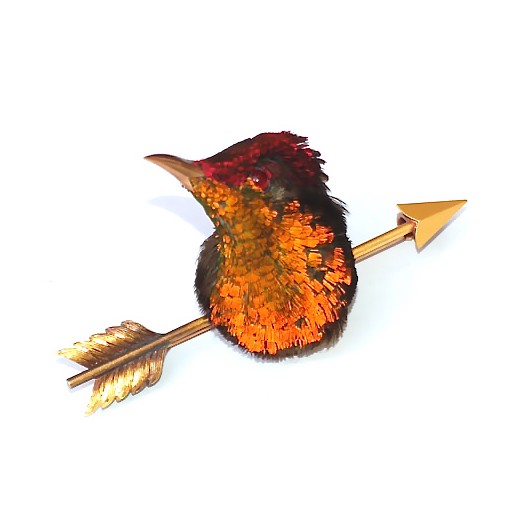
Taxidermy hummingbird jewelry was huge in England during the second half of the 19th century. As the world became more industrialized, it was a way for the wearer to maintain a connection with nature. (You know, by killing it.) There’s currently a suite of hummingbird jewelry in the collection of the Museum of Fine Arts, Boston, as well as a pair of earrings at the Victoria & Albert Museum in London. There’s also an article here, exploring the techniques used in the manufacture of those earrings.
Ick, I know, but should you want to buy your own, this brooch features a hummingbird head with a gold beak on a gold arrow-shaped brooch. Circa 1880s.
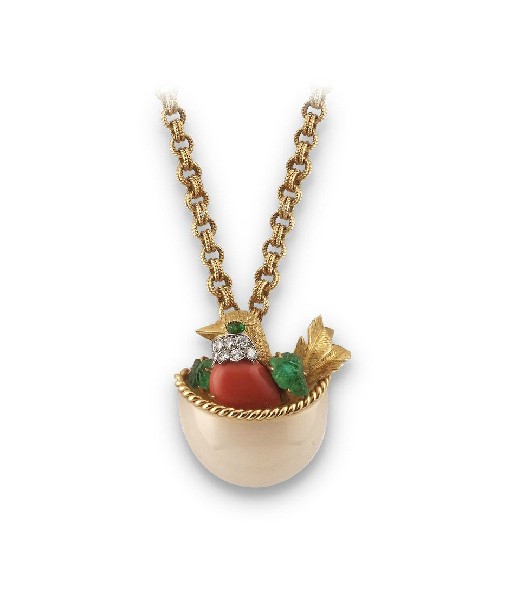
If you prefer your birds not dead (or, never alive), this sweet little Cartier 18k gold and platinum bird pendant dates to 1960. The little chick is primarily of coral and engraved gold, with carved emerald wings, a diamond throat, and a tiny emerald eye. The egg is agate, edged with gold. So cute!
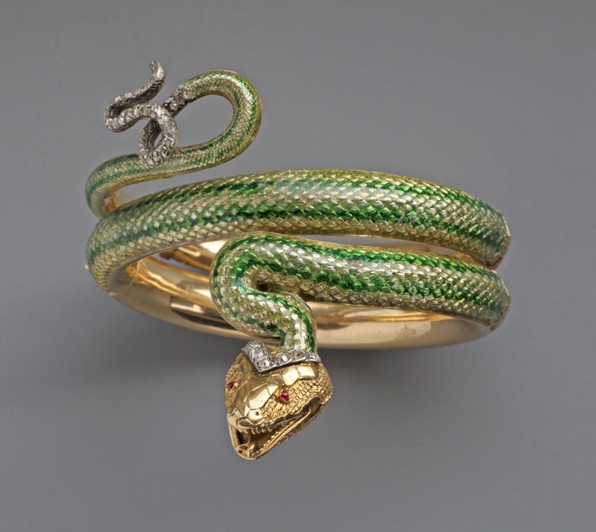
Oh, wow. *drools* This amazing snake bangle bracelet is French, from the Belle Époque period (generally, 1890–1914). It’s made of beautifully engraved gold, with green enameling, ruby eyes, and diamond accents. Look how it opens!
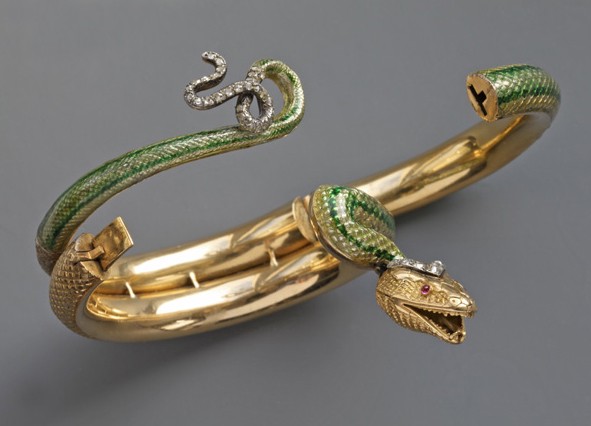
Previously: Egyptomania and the Tiniest Gold Coils of Rope.
Monica McLaughlin was so excited to hear that a ‘Pinner bought the sarcophagus ring from the last installment (see the comments). Congratulations, Celeste!